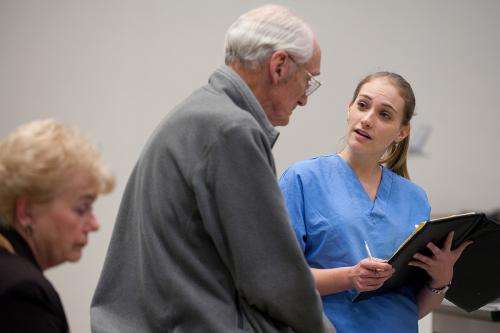Her work shows muscle wasting is not caused by 'failed regeneration' due to impaired myogenesis (formation of muscular tissue). Credit: UCI UC Irvine
A review by a UWA scientist into therapies for age-related muscle wasting (sarcopenia) has called into question the suggested use of stem cell therapy as a potential treatment.
UWA cell biologist Professor Miranda Grounds examined years of research and extensively consulted with peers on the topic and says assumptions need more scientific validation.
"There is no scientific justification that using clinical myogenic stem cell therapy to improve regeneration of age-related muscle wasting actually works," Prof Grounds says.
"The concrete science in relation to muscle wasting is that it is a natural ageing process and a normal part of a changing metabolism and the denervation of myofibres.
"The aim is to slow the rate of these changes by exercise and other interventions to maintain healthy muscle mass," she says.
Dr Grounds' review of age-related muscle wasting in very old mice and flies show nerves let go of old muscles which reduces muscle mass and function.
"Satellite [myogenic stem] cells seem to be of little importance for age-related muscle wasting and related changes have nothing to do with stem cells in terms of muscle regeneration," Prof Grounds says.
Stem cell therapy has a specific purpose to grow new tissue once it has been damaged or destroyed.
"Natural ageing shows no evidence of serious damage," Prof Ground says.
Satellite cells essential for producing new muscle
However, research does show satellite [stem] cells are essential in order to make new muscles if muscles get severely damaged, such as from a serious accident.
"There is a wide use of the term 'regeneration' for a range of very different cellular processes, leading to confusion and incorrect assumptions," Prof Grounds says.
Her work shows muscle wasting is not caused by 'failed regeneration' due to impaired myogenesis (formation of muscular tissue).
"Classic muscle tissue regeneration involves myofibre necrosis [dead tissue]," she says.
"But this kind of damage is not normally seen in relatively sedentary mature humans."
Skeletal muscle does have a proven capacity for regeneration involving cellular changes but this is usually after a serious accident.
Also, once muscle atrophy (weakening) has occurred, an increase in muscle mass (hypertrophy) can occur but this is considered muscle restoration rather than regeneration.
Age-related muscle wasting differs from both serious cellular damage and atrophy.
Provided by Science Network WA



















